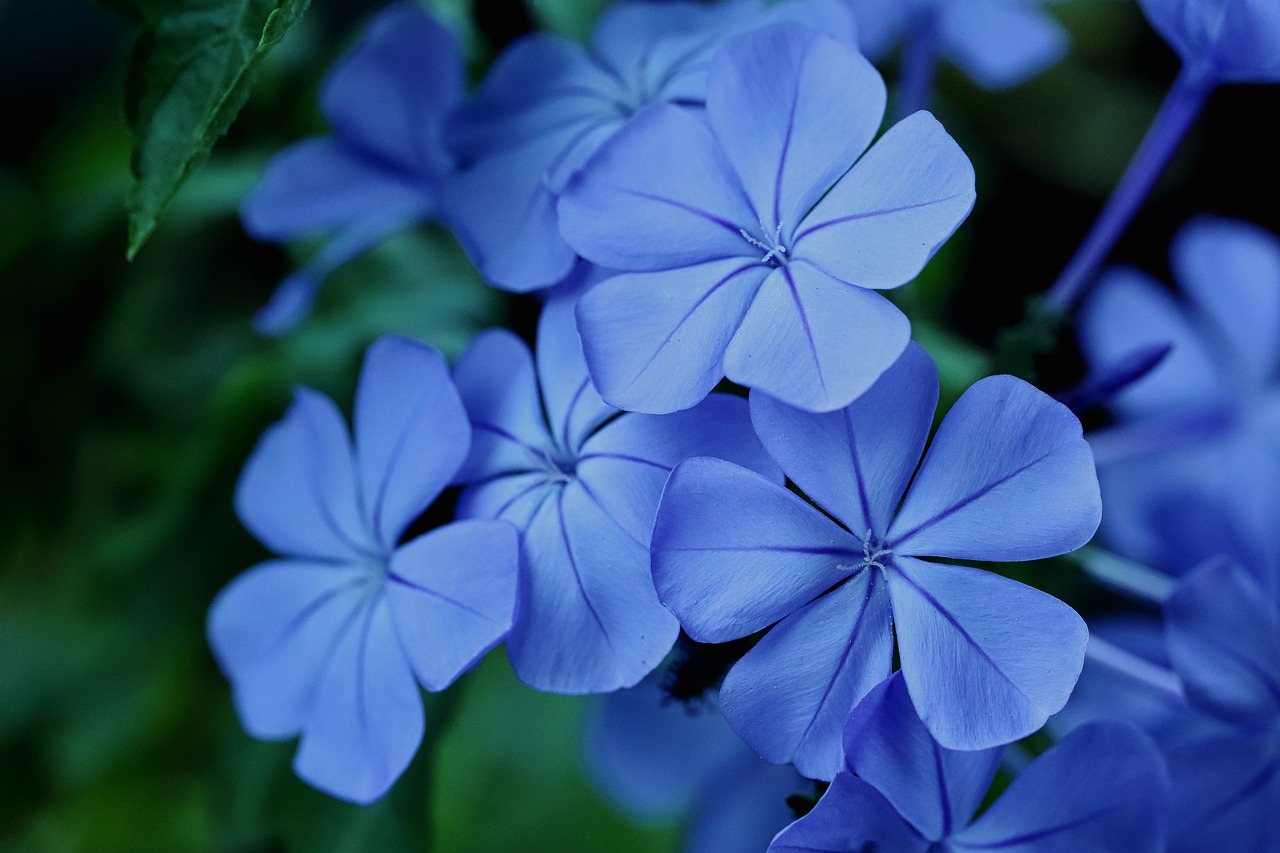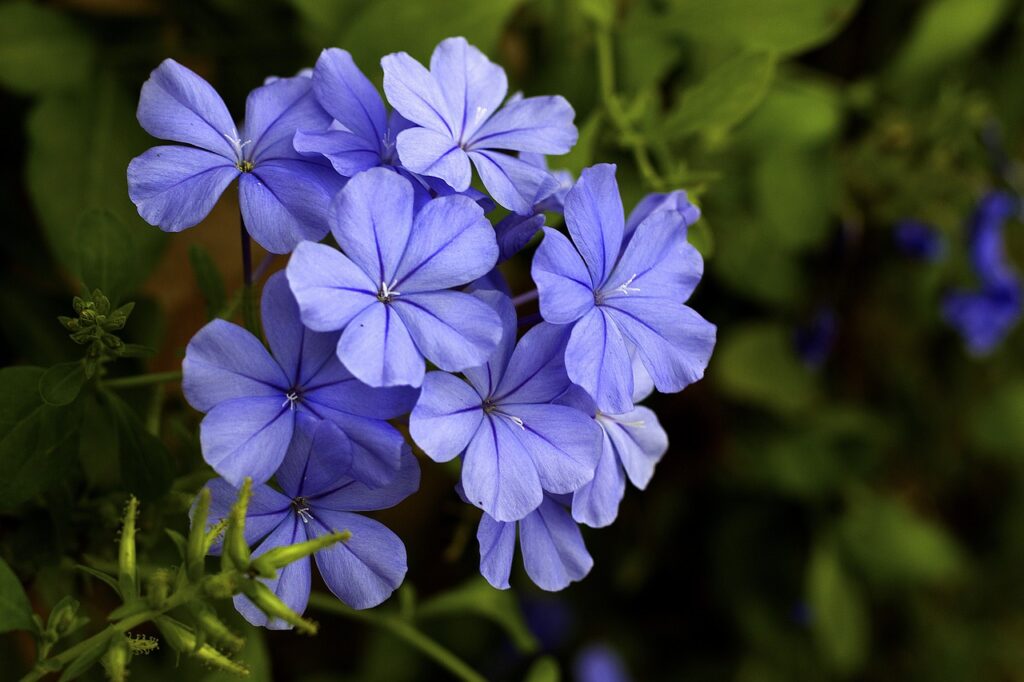Plumbago | A Refreshing Vine Reflecting the Blue Sky

Plumbago is a plant that produces clusters of beautiful blue and pale blue flowers over a long period. It is especially popular for decorating tropical-style gardens and fences.
With its cool tones and climbing habit, it brings a refreshing atmosphere to gardens and balconies.
In this article, I will explain in detail the basic information about plumbago, its cultural background, and tips for cultivation.
Basic Information
- Scientific name: Plumbago auriculata
- Family: Plumbaginaceae
- Origin: South Africa
- Appearance: Plumbago is a climbing plant that can be trained on fences or trellises. The small flowers with five petals are notable for their blue or pale blue shades. Some varieties also produce white flowers, all of which share a refreshing elegance.
- Blooming season: From spring to autumn, flowering continuously for an extended period.
Cultural Significance Around the World

Plumbago, with its striking blue flowers, has long been cherished as a symbol of “coolness” and “purity.”
Being native to South Africa, it thrives in warm climates and is widely used in Mediterranean gardens for its resistance to drought.
In Japan, it is known as “Rurimatsuri.” True to its name, the flower provides a refreshing impression that softens the harsh summer heat, making it a popular choice for balconies and wall greening.
Because it is easy to grow and climbs naturally, plumbago is often used on fences and arches, enhancing elegant garden designs.
Historical Background
After being introduced to Europe, plumbago became popular in many gardens and greenhouses. Its cooling blue color was especially valued in hot regions.
In its native South Africa, plumbago grows abundantly in nature and is appreciated as a hardy, low-maintenance plant.
In ancient Europe, blue flowers were believed to bring good fortune and peace. Plumbago’s vivid blue blossoms were likewise embraced as a “symbol of healing” in homes and gardens.
Gardening Advice

Plumbago prefers sunny locations and grows best with plenty of light. Although heat-tolerant, it requires well-drained soil.
It is relatively drought-resistant, but during its growth season, regular watering is essential. Once the topsoil becomes dry, I recommend watering thoroughly.
Fertilize once a month during the growing season with a balanced fertilizer containing nitrogen and phosphorus to encourage flowering.
Because plumbago grows quickly, pruning is necessary to maintain its shape. Cutting back spent branches encourages new shoots and repeat blooming.
As it is vulnerable to frost, I bring potted plants indoors during winter and apply protective measures to in-ground plants.
Conclusion
With its charming blue flowers, plumbago adds a refreshing touch to gardens and balconies. It is relatively easy to care for, and with adequate sunlight and regular pruning, it can bloom beautifully for an extended period.
I encourage you to introduce plumbago into your summer gardening and enjoy its cooling beauty.


